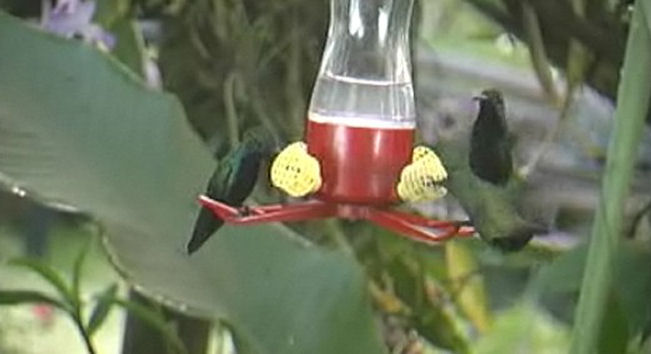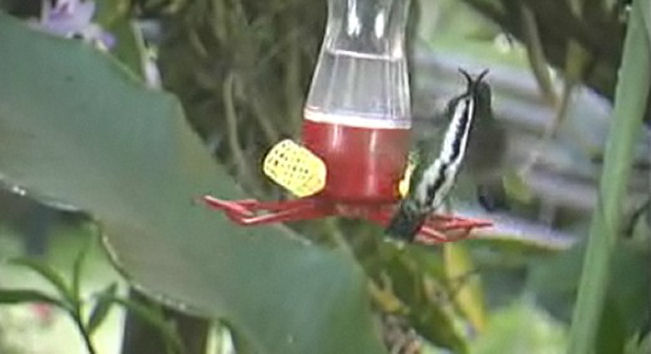|
|
|
The Black-throated Mango is common at Luck's feeders starting in about September and the rest of the year. It competes with the Sombres for numbers and feeder slots and is very close in size. This is the male and it is the only Mango in the area. Note that the entire throat and belly appear black. The beak is slightly curved but about the same proportions as the Sombre. The wings come to the tail tip and are just slightly longer than the Sombres proportionally. You can see a male Violet-capped Woodnymph to the left side of the feeder. Note the long tail and the gap in the middle. Both birds appear shining green on the back whereas the Sombre is dull. Luck's shot showing full colors of male. |












